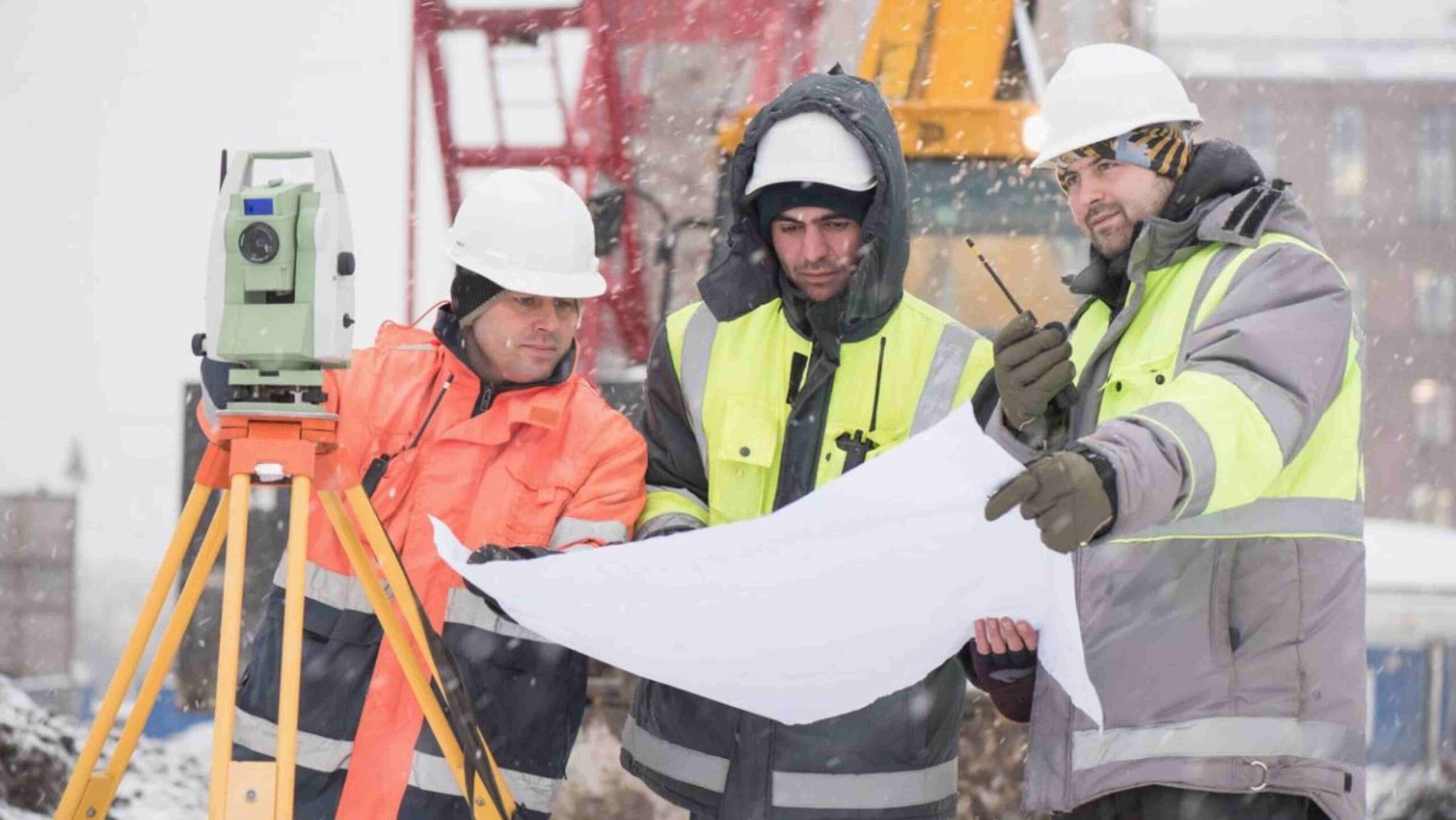HSA Inspections Up 10% in 2025 Is Your Business Ready?
Preparing for More HSA Scrutiny
Are Your Workplace Safety Systems Audit-Ready?
On 21st October 2025, the Health and Safety Authority made an announcement that sent ripples through Irish boardrooms and safety offices across the country. Mark Cullen, who had been serving as interim CEO, was formally appointed to lead Ireland’s workplace safety regulator. For those who know Cullen’s track record 25 years with the HSA, including significant experience in enforcement this appointment signals something important: the HSA is serious about compliance, and they’re backing up that commitment with action.
The appointment comes at a time when workplace safety enforcement is already ramping up significantly. If your business hasn’t already felt the increased focus on compliance, you’re likely to encounter it soon. The question isn’t whether HSA inspectors will visit your sector it’s whether you’ll be ready when they do.
The Numbers A 10% Increase You Can’t Ignore
Let’s start with the figures that are driving conversations in safety departments across Ireland. The HSA has committed to conducting approximately 11,900 workplace inspections in 2025 that’s a significant 10% increase from the 10,000 inspections carried out in 2024. But these aren’t just random visits; they’re part of a carefully planned, risk-based approach outlined in the HSA’s Programme of Work 2025.
Key Numbers: 11,900 planned inspections in 2025 (up from 10,000 in 2024). That means roughly 32 inspections happening every single working day across Ireland. The chances of your sector, your area, or even your specific business being visited have increased substantially.
These figures represent more than just bureaucratic activity they reflect a strategic decision to intensify enforcement efforts across all sectors. The HSA published its 2024 Annual Report in July 2025, highlighting what they call “strengthened enforcement” as a key achievement. This isn’t accidental language; it’s a clear signal of intent.
According to recent HSA press releases, the increase isn’t just about numbers it’s about effectiveness. The Authority is focusing on high-risk activities and industries where serious injuries and fatalities continue to occur despite ongoing safety efforts.
Why the Increase? Strategic Priorities Drive Action
The HSA’s decision to increase inspections by 10% doesn’t exist in a vacuum. It’s driven by clear strategic priorities outlined in their Strategic Priorities framework, which emphasises building and supporting compliance through targeted inspection and enforcement programmes.
Data-Driven Decision Making
The HSA’s 2024 Annual Report revealed concerning trends in workplace injuries and fatalities. Despite ongoing safety campaigns and guidance, certain sectors continue to experience preventable incidents. The construction industry, for example, continues to see fatalities from falls at height, whilst the agricultural sector faces ongoing challenges with machinery-related incidents.
Regulatory Evolution
Ireland’s workplace safety landscape is evolving rapidly. New regulations, such as the Safety, Health and Welfare at Work (Quarries) Regulations 2025, demonstrate the HSA’s commitment to updating and strengthening safety requirements. More regulations are expected, and increased inspections ensure these new requirements are being properly implemented.
International Commitments
As part of broader EU initiatives on workplace safety, Ireland is committed to reducing workplace injuries and fatalities. The increased inspection programme helps demonstrate Ireland’s commitment to these international standards and ensures Irish workplaces meet evolving European safety expectations.
Who’s Being Targeted? High-Risk Industries in Focus
The HSA isn’t conducting these 11,900 inspections randomly. They’re using a risk-based approach that prioritises industries and activities with the highest potential for serious injury or fatality. If your business operates in any of these sectors, you’re particularly likely to receive an inspection visit.
Construction Industry
Construction remains the HSA’s top priority, and for good reason. Falls from height continue to cause fatalities, despite extensive safety campaigns. The HSA’s recent all-island safety campaign specifically targeting construction falls demonstrates their focus on this sector. Inspectors are particularly looking at scaffolding safety, edge protection, and working at height procedures.
Agriculture and Farming
With 16 farm fatalities recorded by September 2025 (compared to 12 in all of 2024), agriculture represents a critical focus area. The HSA’s presence at the National Ploughing Championships and their targeted inspection campaigns demonstrate their commitment to improving farm safety. Key focus areas include machinery safety, working at height on farm buildings, and construction activities on farms.
Healthcare Sector
The healthcare sector faces unique challenges, particularly around manual handling, workplace violence, and chemical exposures. With ongoing staffing pressures and evolving work practices, the HSA recognises the need for increased oversight in this critical sector.
Forestry Operations
The HSA launched a specific forestry sector inspection campaign in September 2025, focusing on adherence to the Code of Practice for Managing Safety and Health in Forestry Operations. This high-risk industry requires specialised safety knowledge and strict compliance with established protocols.
Sector Reality Check: If your business operates in construction, agriculture, healthcare, or forestry, the likelihood of an HSA inspection has increased significantly. But even businesses in other sectors aren’t exempt the HSA also focuses on cross-cutting issues like manual handling, chemical safety, and workplace ergonomics that affect all industries.
What Inspectors Look For Common Compliance Failures
Understanding what HSA inspectors focus on during visits can help businesses prepare effectively. Based on the HSA’s 2025 strategic priorities and recent enforcement patterns, several key areas consistently emerge as compliance challenges.
Work at Height
Falls remain a leading cause of workplace fatalities. Inspectors examine scaffolding erection and inspection records, edge protection measures, ladder safety, and fall arrest systems. They’re particularly interested in whether businesses have proper risk assessments for work at height activities and whether workers are adequately trained.
Manual Handling and Ergonomics
With musculoskeletal disorders representing a significant portion of workplace injuries, inspectors examine manual handling procedures, risk assessments, and training records. They look for evidence that businesses have implemented proper lifting techniques and provided mechanical aids where necessary.
Chemical Safety
The HSA has updated its online course on chemical safety, reflecting increased focus on this area. Inspectors examine chemical risk assessments, safety data sheets, storage arrangements, and personal protective equipment. They’re particularly interested in how businesses manage chemical exposures and whether workers understand the hazards they face.
Safety Management Systems
Under the Safety, Health and Welfare at Work Act 2005, businesses must have proper safety management systems. Inspectors examine safety statements, risk assessments, training records, and consultation processes. They want to see evidence that safety management is systematic, not ad hoc.
Training and Competence
Inspectors consistently examine whether workers have received appropriate safety training and whether that training is documented and up to date. They’re particularly interested in training for high-risk activities and whether businesses can demonstrate that workers are competent for their assigned tasks.
The Cost of Non-Compliance: Real Cases, Real Consequences
The financial and reputational costs of non-compliance have never been higher. Recent prosecutions demonstrate the HSA’s commitment to enforcement and provide clear examples of the consequences businesses face when safety standards aren’t met.
Recent Prosecutions Tell the Story
The numbers are sobering. In March 2025, John Fletcher Limited was fined €400,000 following a fatal workplace incident. In July 2025, Colas Contracting Ltd faced a €270,000 fine for breaches related to a fatal road resurfacing incident. Solar Power BK Limited was fined €100,000, with the director receiving a suspended jail sentence following an employee death.
Financial Reality: These aren’t maximum theoretical penalties these are real fines imposed on real businesses. The HSA’s prosecution records show that substantial fines are becoming increasingly common for serious safety breaches.
Maximum Penalties
The Safety, Health and Welfare at Work Act 2005 provides for maximum penalties of €3 million and up to two years imprisonment for serious breaches. Whilst these maximum penalties aren’t imposed in every case, they demonstrate the seriousness with which the law treats workplace safety failures.
Beyond Financial Costs
The impact of prosecution extends far beyond financial penalties. Businesses face reputational damage, increased insurance costs, difficulty tendering for contracts, and potential civil liability from injured workers. The indirect costs often exceed the direct financial penalties.
Getting Ready Your Inspection Preparation Checklist
The key to managing HSA inspections successfully isn’t about avoiding them it’s about being genuinely prepared. Businesses that maintain good safety standards year-round find inspections less stressful and more productive.
Documentation Review
Ensure your safety statement is current and reflects your actual work activities. Risk assessments should be up-to-date and cover all significant hazards. Training records must be complete and demonstrate that workers have received appropriate instruction for their roles.
Physical Workplace Inspection
Conduct regular internal inspections using the same criteria HSA inspectors would apply. Look for obvious hazards, check that safety equipment is in good condition, and ensure that safety signs and emergency equipment are properly maintained.
Worker Competence
Ensure workers can demonstrate competence in safety-critical tasks. They should understand the hazards they face, know how to use safety equipment properly, and be able to explain safety procedures relevant to their work.
Pre-Inspection Checklist:
- Review and update safety statement to reflect current operations
- Ensure all risk assessments are current and comprehensive
- Check training records are complete and up-to-date
- Verify safety equipment is in good working order
- Confirm emergency procedures are clearly posted and understood
- Ensure chemical safety data sheets are current and accessible
- Review consultation records with safety representatives
- Check that safety signs and notices are clearly visible
- Verify first aid equipment is properly stocked and maintained
When Inspectors Arrive Best Practices for the Visit
HSA inspectors have significant powers under Irish law, including the right to enter workplaces, examine documents, and interview workers. Understanding the inspection process helps ensure visits proceed smoothly and productively.
Initial Response
Inspectors will typically identify themselves and explain the purpose of their visit. Designate a senior person to accompany the inspector ideally someone with good knowledge of safety procedures and the authority to make decisions if immediate action is required.
During the Inspection
Be cooperative and provide requested documentation promptly. Answer questions honestly inspectors are experienced and will quickly identify attempts to mislead them. If you don’t know something, say so rather than guessing.
Managing Findings
If the inspector identifies issues, listen carefully to their concerns and take notes. Ask for clarification if you don’t understand something. Demonstrate willingness to address problems and ask about timescales for any required improvements.
Follow-Up Actions
If the inspector issues improvement notices or prohibition notices, treat these seriously and respond within the specified timescales. Even informal recommendations should be addressed promptly they often reflect areas where more serious enforcement action could follow if problems persist.
Building a Safety Culture Beyond Compliance
The most successful businesses don’t just prepare for HSA inspections they use safety management as a competitive advantage. When safety becomes embedded in company culture, compliance becomes natural rather than burdensome.
Leadership Commitment
Effective safety management starts at the top. When senior management demonstrates genuine commitment to safety, this filters throughout the organisation. Workers notice when safety is prioritised in decision-making, resource allocation, and day-to-day operations.
Worker Engagement
The best safety programmes involve workers in identifying hazards and developing solutions. Safety representatives play crucial roles in this process, but informal consultation and suggestion systems can also be valuable.
Continuous Improvement
Treat safety management as an ongoing process rather than a compliance exercise. Regular reviews, incident investigations, and proactive hazard identification help maintain and improve safety standards over time.
Cultural Shift: Businesses that view HSA inspections as opportunities for external validation of their safety culture, rather than threats to be managed, typically achieve better safety outcomes and more positive inspection experiences.
Looking Forward Opportunity, Not Threat
The 10% increase in HSA inspections represents something significant: Ireland’s commitment to creating genuinely safe workplaces where people can work without fear of injury or illness. For businesses, this increased focus on safety presents opportunities rather than just challenges.
Companies that embrace proactive safety management often find benefits beyond compliance. Reduced accidents mean lower insurance costs, less disruption, and improved morale. Good safety practices can enhance reputation, improve recruitment and retention, and even provide competitive advantages in tendering processes.
Mark Cullen’s appointment as HSA CEO and the increased inspection programme signal that workplace safety is a priority that won’t diminish. Businesses that prepare now, building robust safety management systems and fostering genuine safety cultures, will find themselves well-positioned not just for inspections, but for sustainable success.
The question isn’t whether your business will encounter this increased enforcement focus it’s whether you’ll be ready to demonstrate that you’re already doing the right things for the right reasons. The businesses that thrive under increased scrutiny are those that have made safety excellence a fundamental part of how they operate.
Start preparing now, not because you have to, but because it’s the right thing to do for your people, your business, and your community. When the HSA inspector arrives and they very well might you’ll be ready to show them a workplace where safety isn’t just a policy, but a lived reality.

What “Quality” Really Means in 2025 Beyond the Checkbox
What "Quality" Really Means in 2025 Beyond the Checkbox What You Really Need to Know Introduction Halloween should be about ghosts and ghouls, trick-or-treating and fancy dress parties. It’s meant to be a night of harmless fun when children roam the streets in...

New EU Toy Safety Regulation
New EU Toy Safety Regulations What You Really Need to Know New EU Toy Safety Regulations On 13 October 2025, the Council of the EU approved its position on a new Toy Safety Regulation that will replace Directive 2009/48/EC. The Regulation tightens chemical controls,...

The AI Revolution in HSEQ
The AI Revolution in HSEQ. What the EU’s "AI Factories" Mean for UK and Irish Businesses What You Really Need to Know Introduction Artificial Intelligence (AI) is rapidly moving from a buzzword to an essential operational tool. Recently, the European Research Area...

National Safety Boost Irish Government Launches New Emergency System
National Safety Boost Irish Government Launches New Emergency System What You Really Need to Know Enhancing Emergency Services Response Across Ireland In a major step forward for national safety, the Irish Government has announced the launch of a new, state-of-the-art...

The ‘H’ in HSEQ: Why Men’s Health is a Workplace Safety Issue
The 'H' in HSEQ: Why Men's Health is a Workplace Safety Issue What You Really Need to Know Introduction November marks Movember a month dedicated to raising awareness of men’s health issues worldwide. But for Irish businesses, particularly in construction and...

Trojan Horse on Wheels
The Trojan Horse on Wheels. Why a UK Scooter Recall is a Major Irish Safety Warning What You Really Need to Know Lessons from a Critical Electrical Safety Failure In the world of workplace safety, the most serious threats often arrive in the most unassuming packages....

Fire Hazard Anker Power Bank Recall is a Workplace Wake-Up Call
Fire Hazard Anker Power Bank Recall is a Workplace Wake Up Call What You Really Need to Know The Shocking Truth About Power Bank Hazards In the world of tech accessories, few names are as recognised and trusted as Anker. That is why the recent major recall of their...

EU-OSHA 2026-2028 What It Means for Irish Workplace Health
EU-OSHA 2026-2028 What It Means for Irish Workplace Health What You Really Need to Know Your Strategic OSH Plan for the Years Ahead As 2025 draws to a close, forward-thinking Irish businesses are already planning for the challenges and opportunities of the years...

Winning the Leading Light Award The Real Secrets to Driving for Work Safety.
Winning the Leading Light Award The Real Secrets to Driving for Work Safety. What You Really Need to Know Unlocking Excellence in Road Safety Management Every year, the Road Safety Authority (RSA) shines a spotlight on the individuals, communities, and organisations...

5 Essential Reasons to Prioritise Eye Safety in Your Workplace
5 Essential Reasons to Prioritise Eye Safety in Your Workplace Find out how to navigate eye safety rules to boost productivity and protect vision. Protecting employees’ vision should be a top priority for any business, especially in industries where tools,...








